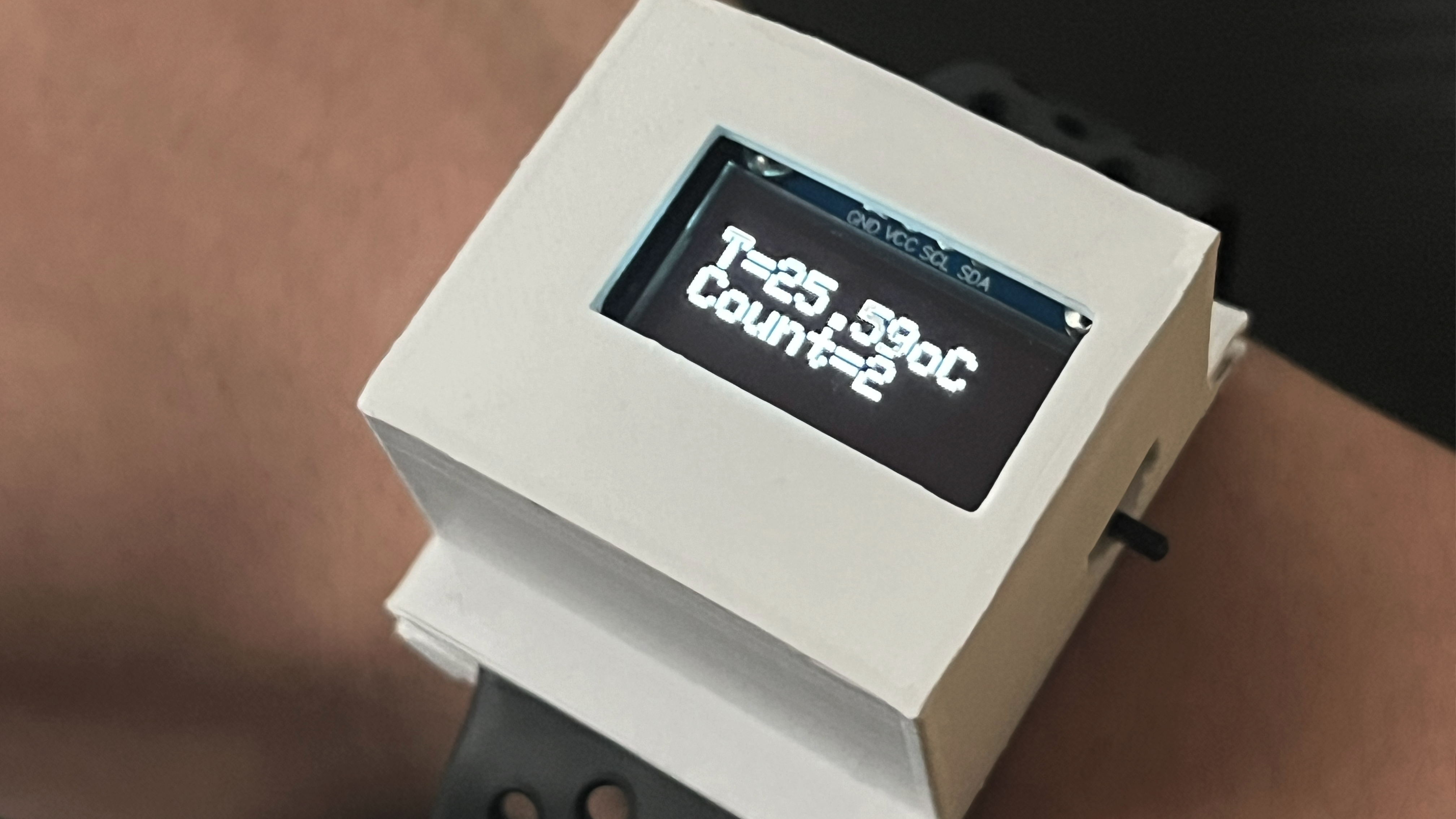I2C Wearable @ Yuecheng
⌚️ This is a wearable device equipped with motion (MPU6050, six DoF accelerometer, and gyroscope), temperature, humidity, and air pressure (BME280) sensing capabilities, and with an OLED display and vibration motor outputs. As a demo application, the motion sensor readings were used to calculate the number of jumping jacks the wearer did.
🔆 Highlights
- Modular I2C physical architecture.
- Suitable for hardware prototyping when using many I2C devices (breakout boards are in use and you don't have time/effort to develop an entire integrated PCB).
- There's a tradeoff between the vertical size and horizontal size.
- PCB rapid fabrication and iteration with the LPKF ProtoLaser U4, designed with Fusion 360.
- Motion sensing and skin-contact temperature&humidity sensing, suitable for wearable sports scenarios.
🔗 Github: https://github.com/YueChengPeng/techin512-wearable
🍾 This is the personal final project of the TECHIN 512 course @ GIX, UW.

The four brass spacer standoff screws (Conductive on the outside surface. There shouldn't be any insulation coatings on these screws in use) on the corners are Vcc, GND, SCL, and SDA. Electrical contact was established by stacking all the PCB layers and screw them tight.
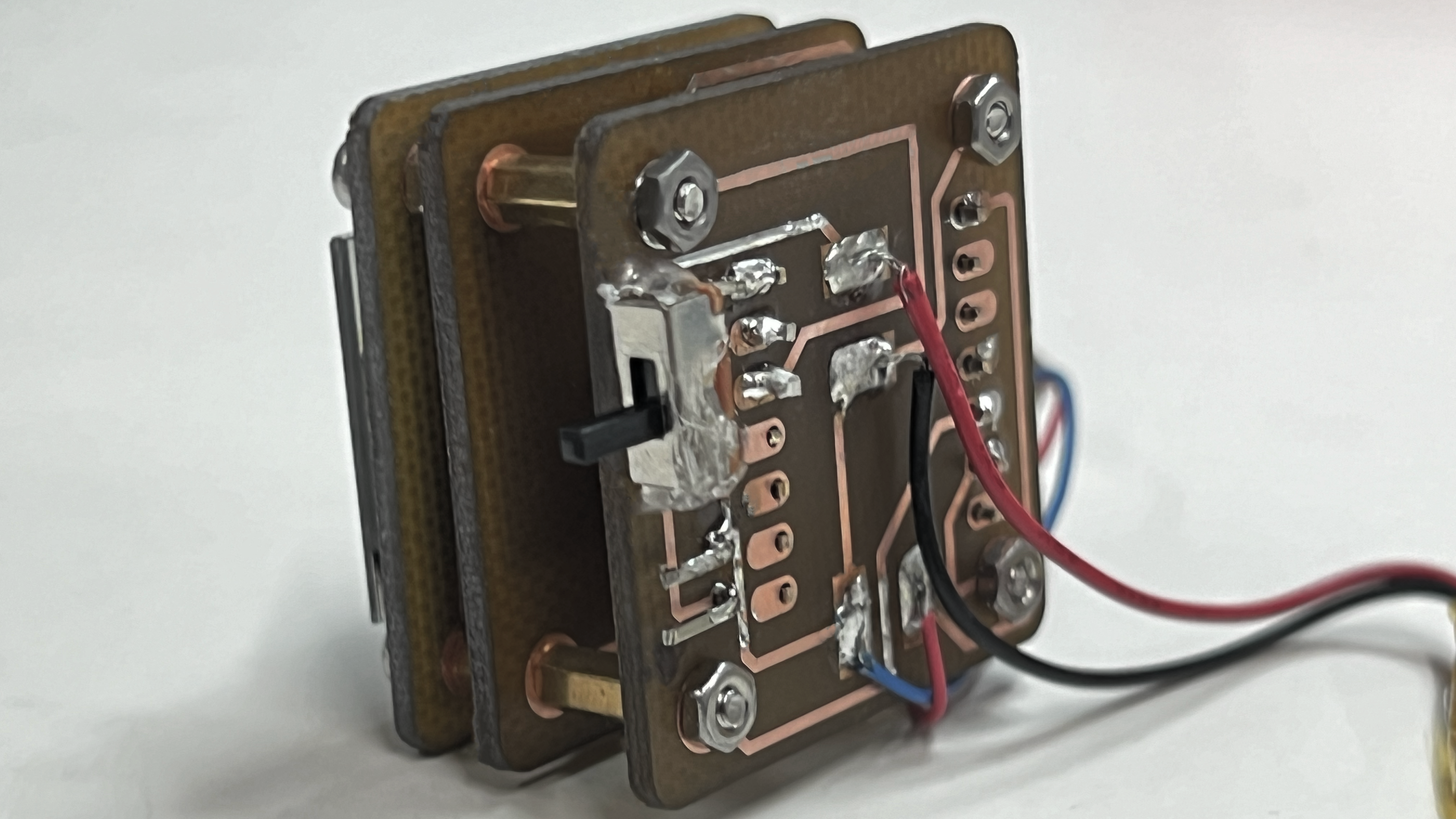
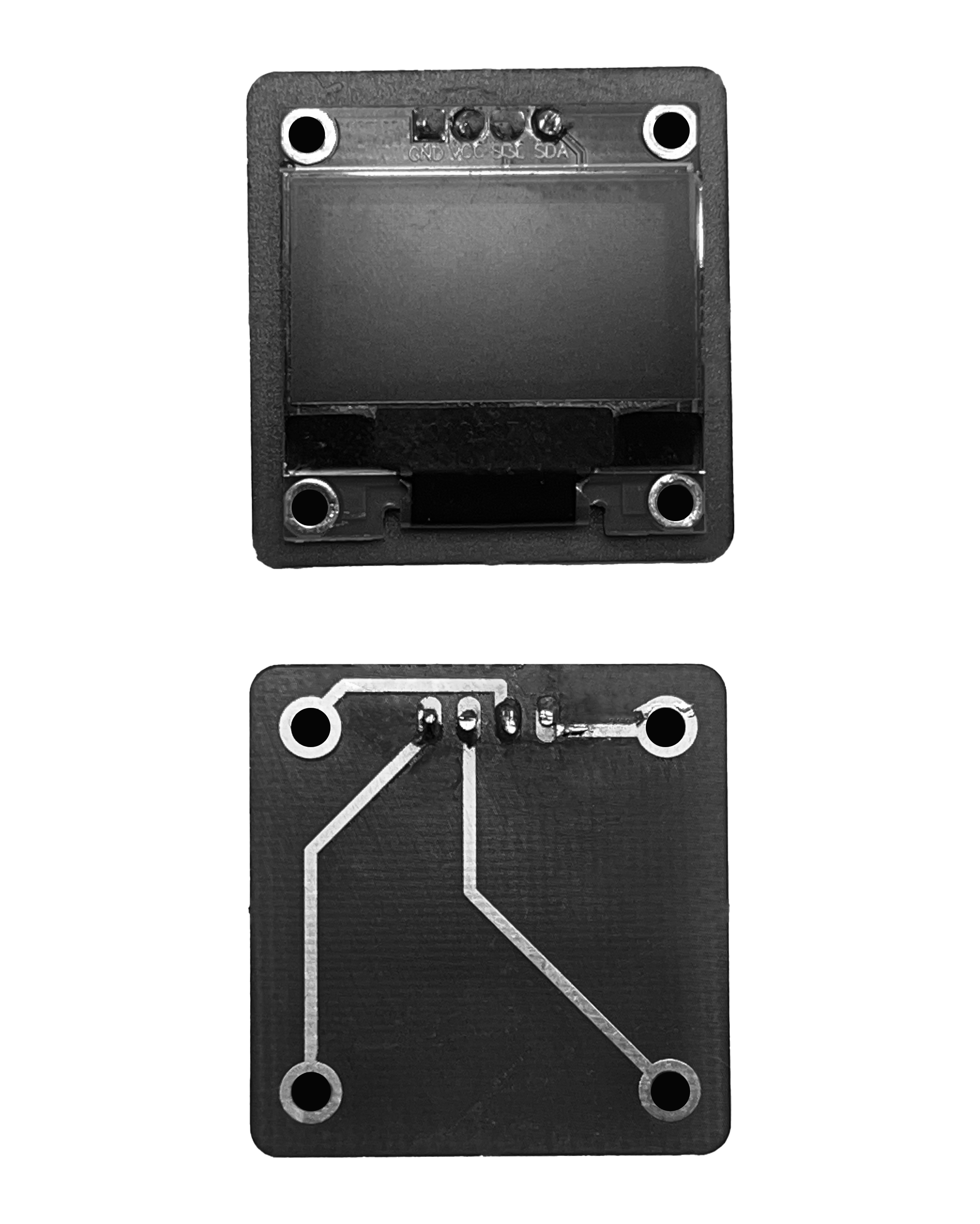
OLED PCB layer
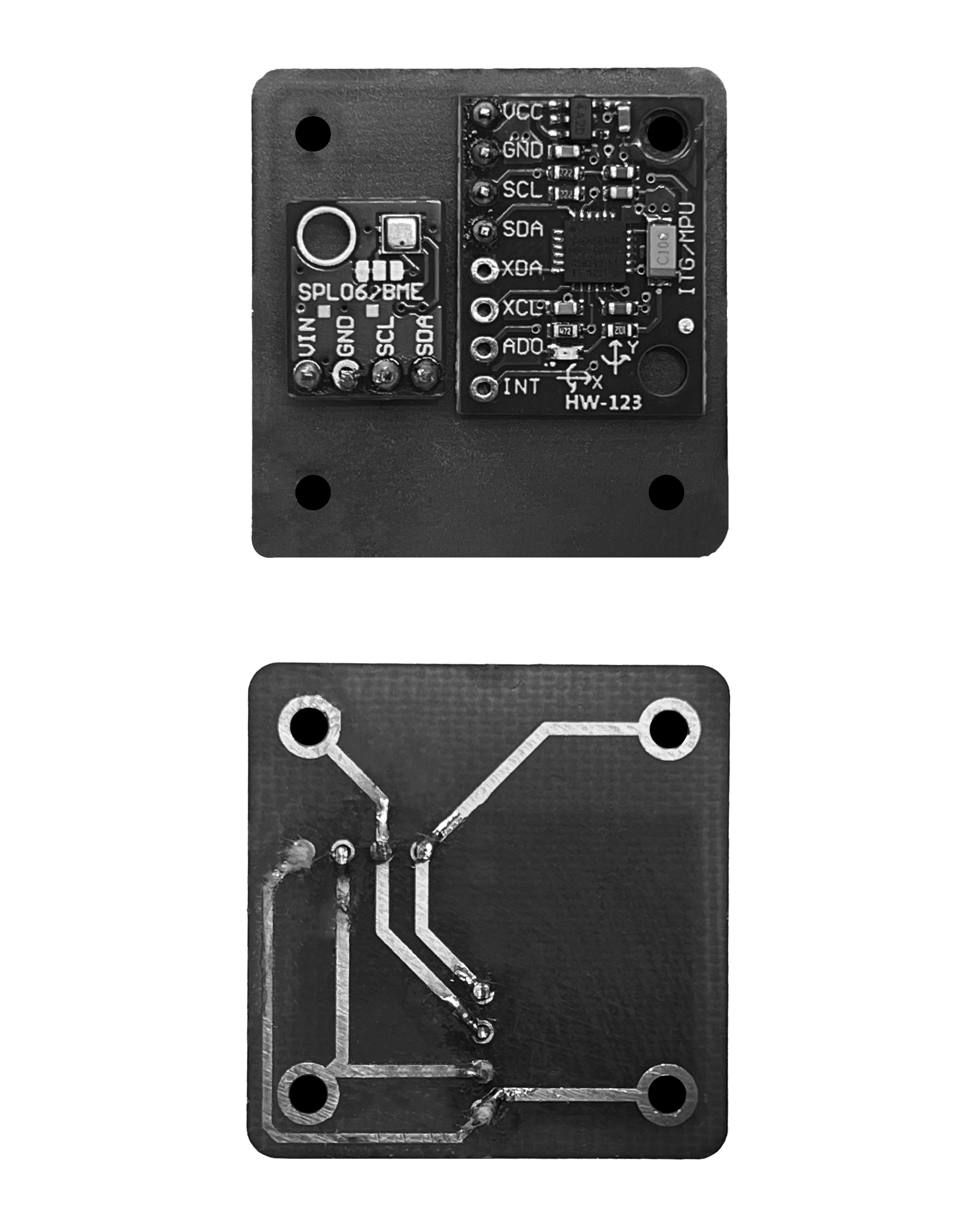
Sensor PCB layer, MPU6050 and BME280
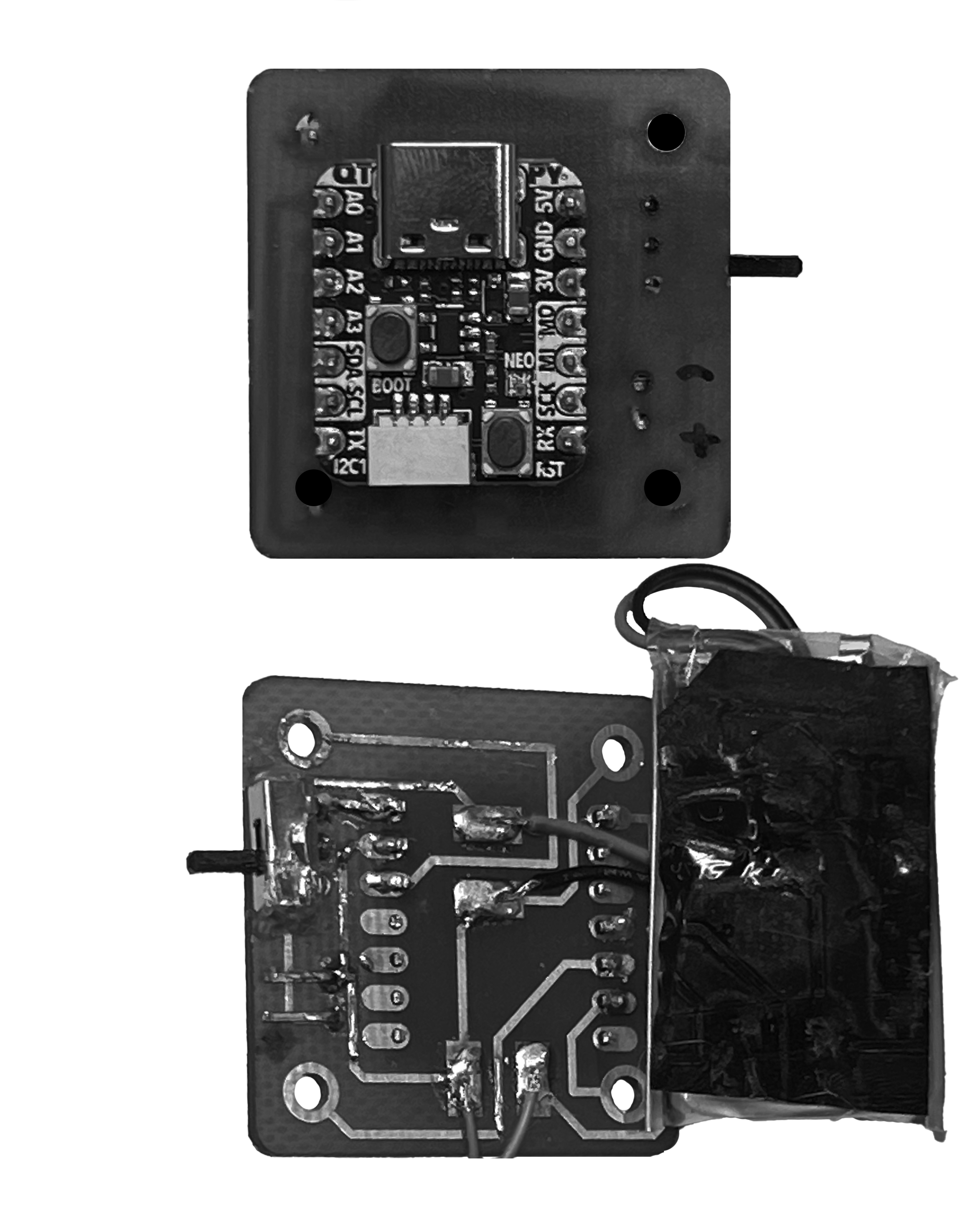
MCU PCB layer, along with other I2C incompatible components (vibration motor, battery, and switch)
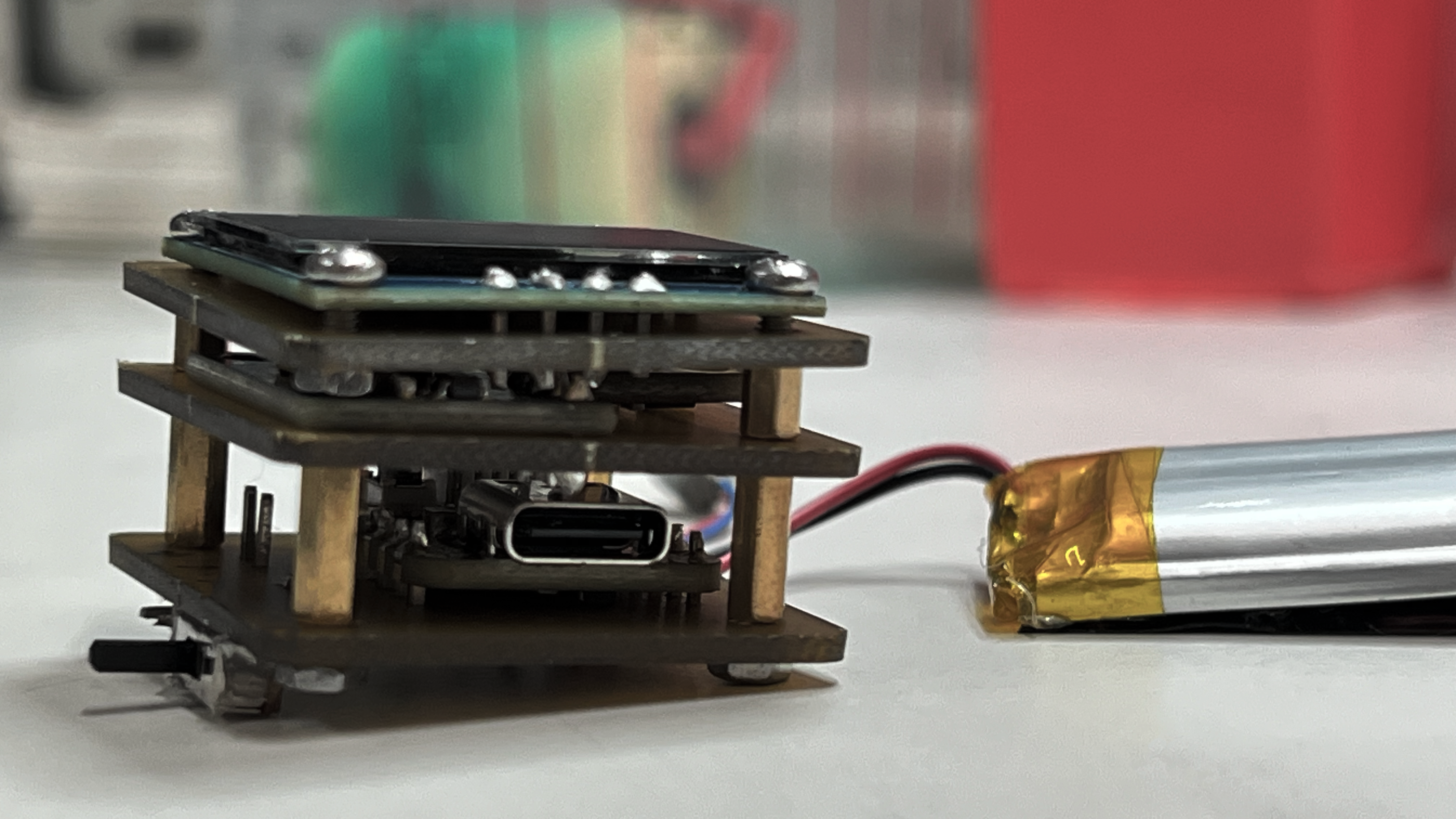

Since the purpose of this method was directly using breakout boards, it's hard to reduce the cumulative volume of the result device. This method, however, was capable of sacrificing the vertical space to save horizontal space and thus suitable for, maybe, wearables, where the skin-contact area constituted a larger concern.
I2C devices can be on both sides of the PCB. The BME sensor's direction is reversed to measure the temperature of the skin.
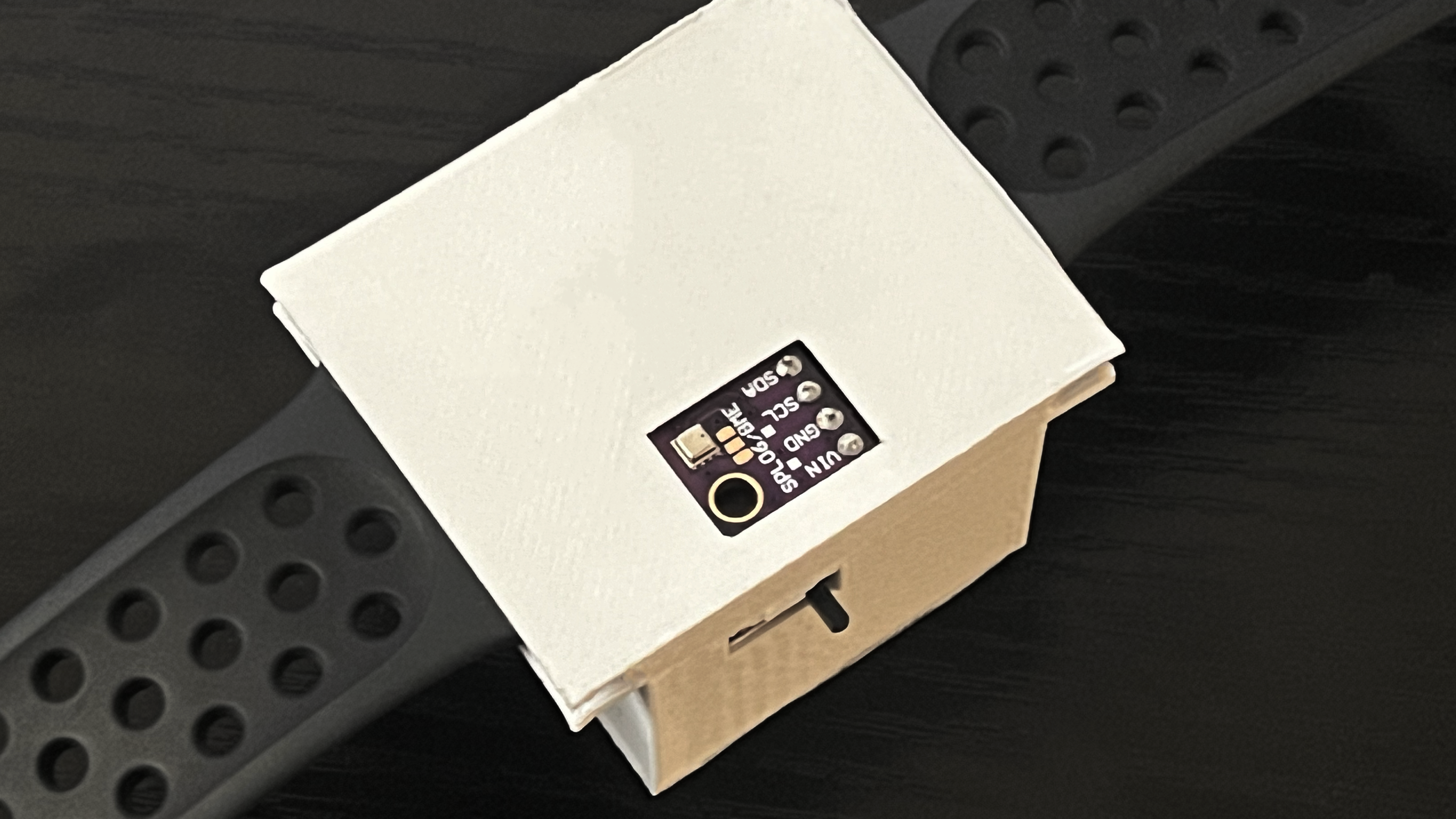
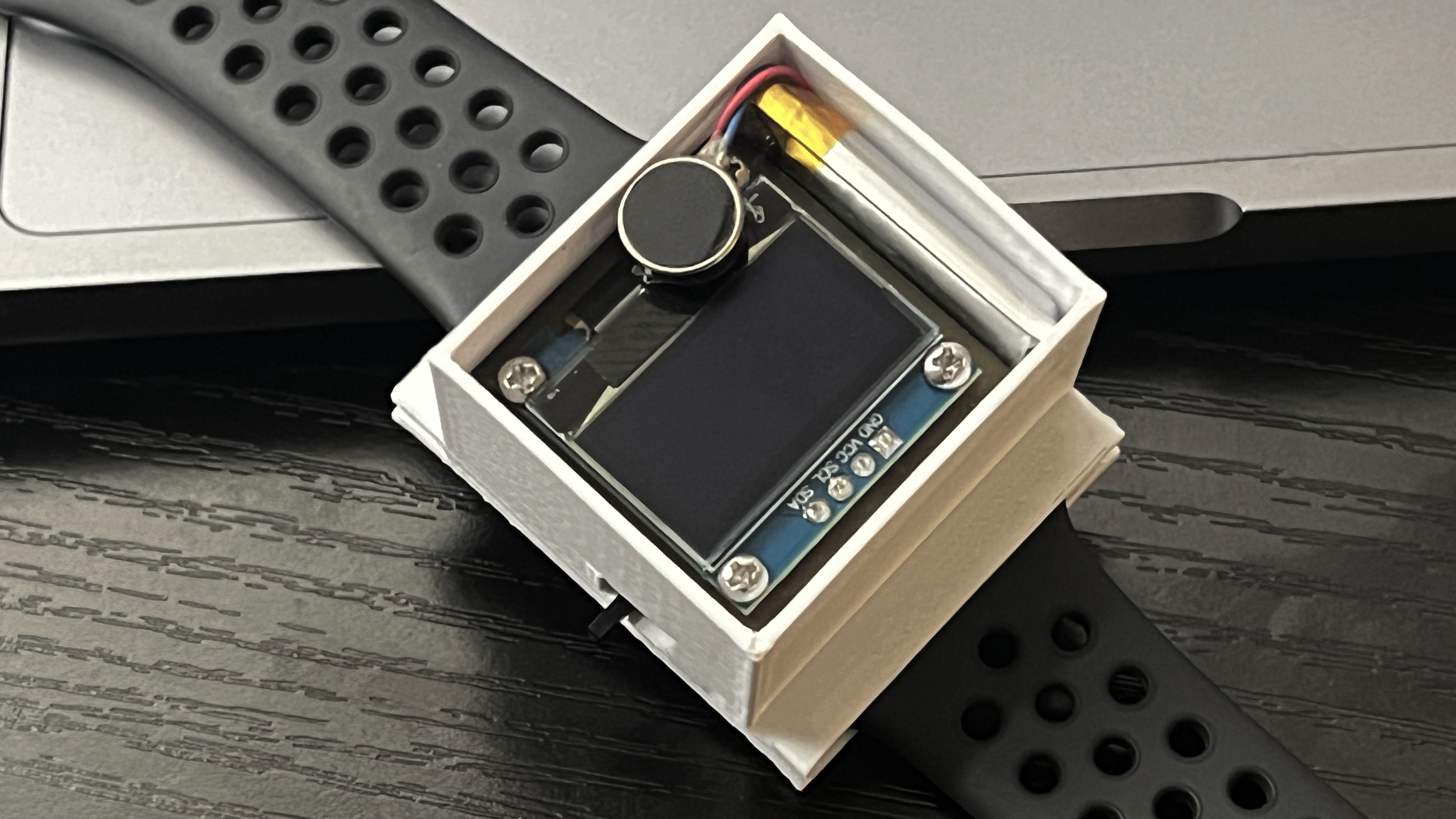
Display temperature reading and jump counts.
